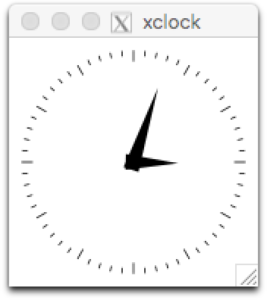This is mostly a quick note to remind myself how to do this, since I spent about 30 minutes today “remembering” (synonymous with googling) how I got this to work last time! That said: Once upon a time, many of us would connect to a remote (usually linux) server and run graphical programs over the network. That usually meant connecting to a box like so:
ssh -X -Y myuser@myserverbox.mydomain.com
Where the -X and -Y were donating SSH forwarding for X11. Side note: usually you had to also enable this on the server in /etc/sshd_config under the very readable setting “X11Forwarding”. In addition to running the programs remotely, you also had the option of choosing between Direct Rendering and Indirect Rendering. Direct Rendering was when your computer received the information to render the images directly. Whereas Indirect Rendering had the server render the images and beam them over to your computer. Not surprising, Direct Rendering is usually faster. For a quick refresher on what all of the general terms are, checkout this awesome post.
Either way, we could then do things like run a remote X11 application and have it pop open on our computers:
xclock

With the advent of things like VNC and NoMachine, where we can actually view the remote computer’s desktop and interact with things, many of us transitioned away from SSH X11 Forwarding. Nevertheless, some users continue to persist and occasionally point out that things don’t always work the way they used to – particularly if you love Apple Macs as much as I do. Recent changes in the XQuartz project may have broken some of this functionality as of 2.7.9. But never fear, with the release of 2.7.10 (and now 2.7.11) you can reenable this functionality by running this command in the terminal:
defaults write org.macosforge.xquartz.X11 enable_iglx -bool true
While I’m not sure it’s necessary, you can also then export a variable to “force” indirect rendering:
export LIBGL_ALWAYS_INDIRECT=1
And finally, as you could have guessed, AFNI and SUMA can both be used with X11 Forwarding! SUMA in particular seems to appreciate indirect graphics, but as always, your mileage may vary. If you find that this is too slow for you, I’d recommend mounting the remote server using FUSE (Mac version here) and SSHFS. You can then run AFNI/SUMA locally while accessing remote data. Obviously you can also use Samba (SMB) or other networking tricks too.